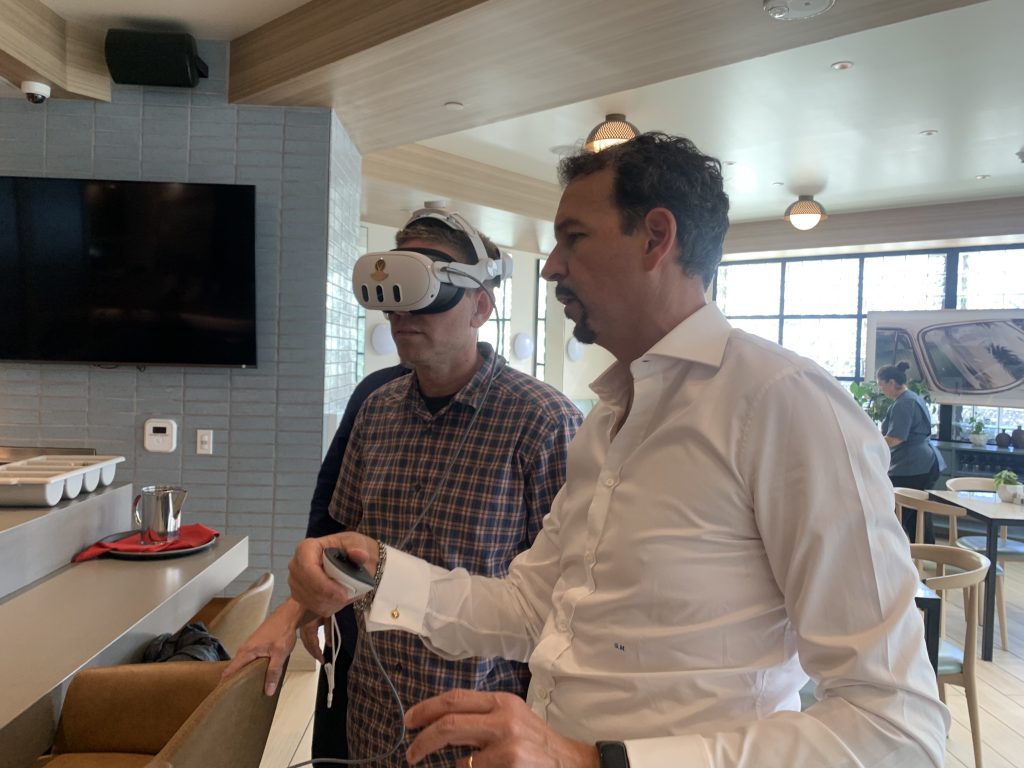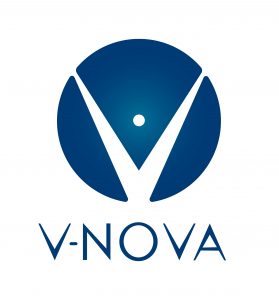V-Nova Wants To Push The Envelope in 2024 And Beyond
By Eric Green
https://www.btlnews.com/crafts/v-nova-wants-to-push-the-envelope-in-2024-and-beyond/
V-Nova, a leader in data compression solutions, has just acquired Parallaxter Srl, which includes its flagship product PresenZ. It makes users feel as though they are inside the movie they are watching. V-Nova’s cutting-edge compression paired with PresenZ will make VR take a major leap forward in 2024 as they have been collaborating with studios to publish content for the format.
If you have seen David Cronenberg’s 1999 film existenZ (which inspired the product name) you will understand that PresenZ is a new leap forward into the unknown. On top of a big year in 2023, V-Nova is rolling out big announcements in 2024 that are sure to catch on.
Below the Line recently caught up with the very busy V-Nova executives, CEO Guido Meardi and General Manager Gianluca Meardi. [Note: The conversation has been edited for clarity.]
Below the Line: How did you initially become aware of Parallaxter Srl?

Guido Meardi: Tristan Salome, a former Special effects whiz, wanted to improve the quality of VR images. He created a point cloud format that worked but the files were too large. He wowed a lot of Hollywood execs but it was stagnant due to the file size, so he approached us regarding compression, which we did because we felt if we couldn’t do it, no one could. From this, we developed V-Nova PresenZ.
Below the Line: What are the major studios’ plans in this space?
Guido Meardi: The reaction is overwhelmingly positive. Dreamworks has been showcasing PresenZ content independently at Siggraph. I believe many of the major studios worldwide intend to publish content in this format and are looking with great interest at this format.
Gianluca Meardi: We are going to release content next year, including a music video with a very important singer in volume capture so that you will be able to experience the music video together with her. It will be on multiple platforms: Team VR, The Quest Store, PlayStation, and The Apple Vision Pro store when it comes out.

Below the Line: What do you think is going to happen in the VR space once the Apple Vision Pro comes out?
Guido Meardi: Apple revolutionized the XR market because they raised the bar, which they do for every industry they get involved in. The object itself is of fantastic quality. The user interface is amazing. Tim Cook immediately clarified that this device is for entertainment, not just gaming. We love gaming, but half of the people are heavy gamers. A hundred percent of people like entertainment. The possibility to do that with immersion technology at phenomenal quality is just incredible.
Below the Line: Tell us more about V-Nova’s upcoming Productions.
Gianluca Meardi: We are targeting our customer base: Action, Science Fiction, and even documentaries for museums that will be location-based and formulated to be realistic, not overwhelming. Everything will be published online, of course. We are building a huge community of new producers for the format with the idea that the viewer can live in the movie.
Guido Meardi: The beauty of this format is that the CG production pipeline is no longer incredibly costly. It’s going down a lot. The interesting thing is seeing the distinction between CG and animation, which of course is the easiest thing because it’s where you may already have assets in 3D, and so it’s easier to create something and render it. But the possibility to do live-action with real humans is also becoming increasingly viable. That’s why we are doing the music video experience. It’s like a music video, but it’s volumetric.
Below the Line: Are special cameras required for VR?
Guido Meardi: No, just normal techniques to film. The procedure to convert to VR is called Videogrammetry. Photogrammetry is if it’s a photo. It’s when you take a hundred cameras for instance, around you, and then you combine all these points of view to create a volumetric model. Then you import it to a tool such as Maya, and you can do whatever you want with it as if it was a volumetric asset. The beauty is that AI is now giving a big boost to these techniques because you can now do the same things with fewer cameras and a better level of detail.
 Below the Line: How’d V-Nova’s get started in the first place?
Below the Line: How’d V-Nova’s get started in the first place?
Guido Meardi: Our company is a data compression company. LCEVC (Low-complexity enhancement video coding) is an extremely important format that can give better quality to more people at lower costs. When initially demoed, we would get feedback about the compression tech being great but nothing we’d show would show off its full potential.
We wanted to push the envelope with LCEVC and give people a more emotional experience. The only place where we could have people gasp and say “wow” was by adding new dimensions and that’s why we started working with VR.
Below the Line: Is this mainly for home viewing or do you foresee some sort of theatrical version of this?
Gianluca Meardi: We are aiming for both home viewing and shared experiences. I think that we will have both kinds of experiences. It will be difficult for theaters to keep hundreds of headsets on hand, but what we see is that you can experience content with your friends who are remotely connected with you with the headset. So maybe you are not going to the movie theaters with 20 friends, but you are experiencing the movie with 20 friends around the world.
Below the Line: Does it seem like 2024 will be a big year for V-Nova?
Guido Meardi: I think so. Every year has been better than the last. LCEVC became inevitable. It was adopted by all the major players and will be used by consumers in 2024. With PresenZ launching and our further advancements with scaling and compression, 2024 is going to be a very pivotal year and moment.



